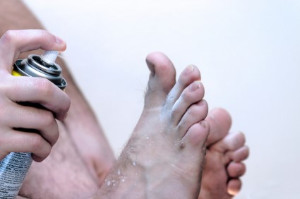Items filtered by date: November 2025
Hard, Soft, and Seed Corns Explained

Corns are thickened areas of skin that develop due to repeated pressure or friction, commonly on the feet. There are three main types of corns. Hard corns appear as small, dense, and raised bumps often found on the tops or sides of toes. Soft corns are softer and rubbery, usually occurring between toes where moisture is present. Seed corns are tiny, clustered corns found on the soles of the feet. Symptoms include discomfort or pain when walking or wearing shoes, and the skin may feel rough, dry, or tender. Corns are caused by ill-fitting shoes, abnormal foot mechanics, or repetitive activities. A podiatrist can diagnose corns through examination and recommend treatments. Options include protective padding, shoe modifications, trimming or removal of the corn, and addressing underlying causes like foot deformities. It is suggested that you make an appointment with a podiatrist to relieve pain and prevent corns from worsening or recurring.
If you have any concerns regarding your feet and ankles, contact one of our doctors of Conroe Foot Specialists. Our doctors will treat your foot and ankle needs.
Corns: What Are They? and How Do You Get Rid of Them?
Corns can be described as areas of the skin that have thickened to the point of becoming painful or irritating. They are often layers and layers of the skin that have become dry and rough, and are normally smaller than calluses.
Ways to Prevent Corns
There are many ways to get rid of painful corns such as wearing:
- Well-fitting socks
- Comfortable shoes that are not tight around your foot
- Shoes that offer support
Treating Corns
Treatment of corns involves removing the dead skin that has built up in the specific area of the foot. Consult with Our doctors to determine the best treatment option for your case of corns.
If you have any questions, please feel free to contact our offices located in Conroe and Huntsville, TX . We offer the newest diagnostic and treatment technologies for all your foot care needs.
Athlete’s Foot and Common Symptoms
 The medical term for athlete’s foot is tinea pedis. It is an infection caused by a fungus that lives and thrives in warm and moist environments. This fungus can enter the body through tiny cracks in the skin of the feet and can cause uncomfortable symptoms. These include itchy skin on the bottom of the feet or between the toes, and the affected area may burn. In severe cases, blisters may develop and ooze, and can often appear unsightly. There are measures that can be implemented that may help to prevent athlete’s foot. These can consist of wearing appropriate shoes while in public pools, showers, and surrounding areas, in addition to refraining from sharing towels, shoes, and socks. If you have symptoms of athlete's foot, it is suggested that you make an appointment with a podiatrist who can offer you treatment options.
The medical term for athlete’s foot is tinea pedis. It is an infection caused by a fungus that lives and thrives in warm and moist environments. This fungus can enter the body through tiny cracks in the skin of the feet and can cause uncomfortable symptoms. These include itchy skin on the bottom of the feet or between the toes, and the affected area may burn. In severe cases, blisters may develop and ooze, and can often appear unsightly. There are measures that can be implemented that may help to prevent athlete’s foot. These can consist of wearing appropriate shoes while in public pools, showers, and surrounding areas, in addition to refraining from sharing towels, shoes, and socks. If you have symptoms of athlete's foot, it is suggested that you make an appointment with a podiatrist who can offer you treatment options.
Athlete’s foot is an inconvenient condition that can be easily reduced with the proper treatment. If you have any concerns about your feet and ankles, contact one of our doctors from Conroe Foot Specialists. Our doctors will treat your foot and ankle needs.
Athlete’s Foot: The Sole Story
Athlete's foot, also known as tinea pedis, can be an extremely contagious foot infection. It is commonly contracted in public changing areas and bathrooms, dormitory style living quarters, around locker rooms and public swimming pools, or anywhere your feet often come into contact with other people.
Solutions to Combat Athlete’s Foot
- Hydrate your feet by using lotion
- Exfoliate
- Buff off nails
- Use of anti-fungal products
- Examine your feet and visit your doctor if any suspicious blisters or cuts develop
Athlete’s foot can cause many irritating symptoms such as dry and flaking skin, itching, and redness. Some more severe symptoms can include bleeding and cracked skin, intense itching and burning, and even pain when walking. In the worst cases, Athlete’s foot can cause blistering as well. Speak to your podiatrist for a better understanding of the different causes of Athlete’s foot, as well as help in determining which treatment options are best for you.
If you have any questions please feel free to contact our offices located in Conroe and Huntsville, TX . We offer the newest diagnostic and treatment technologies for all your foot and ankle needs.
